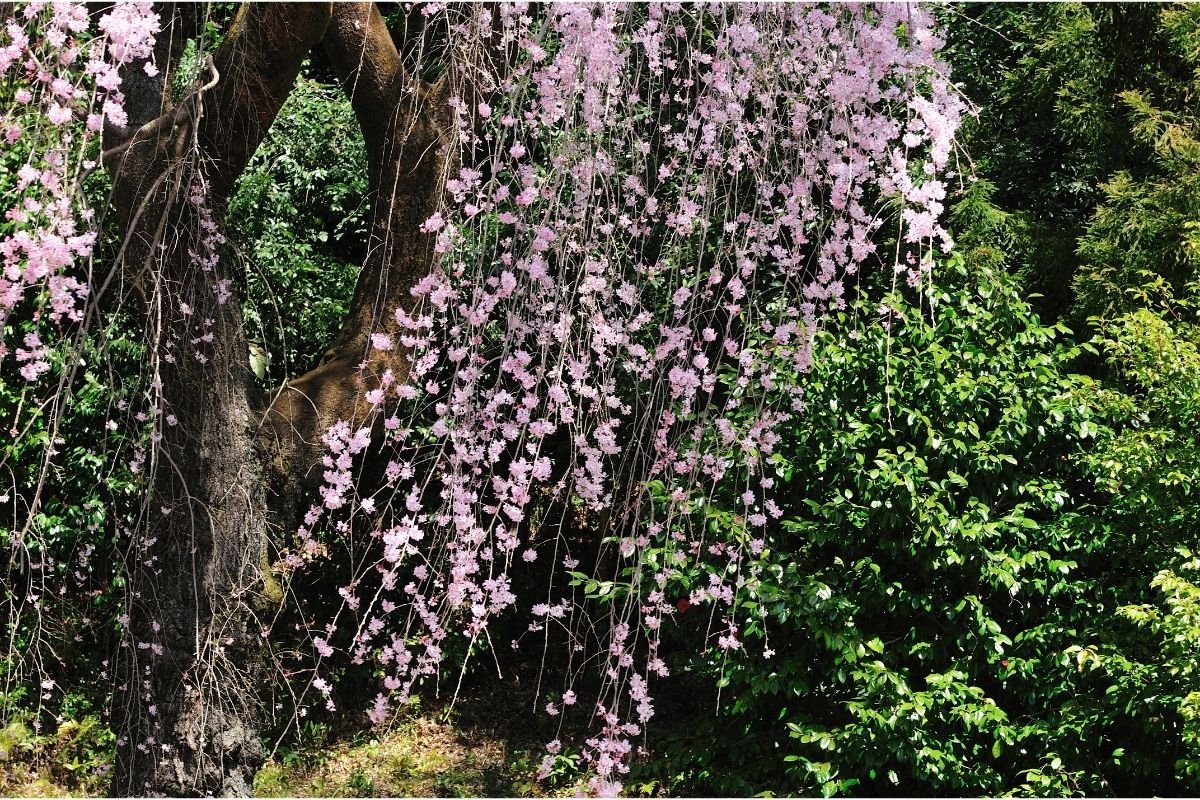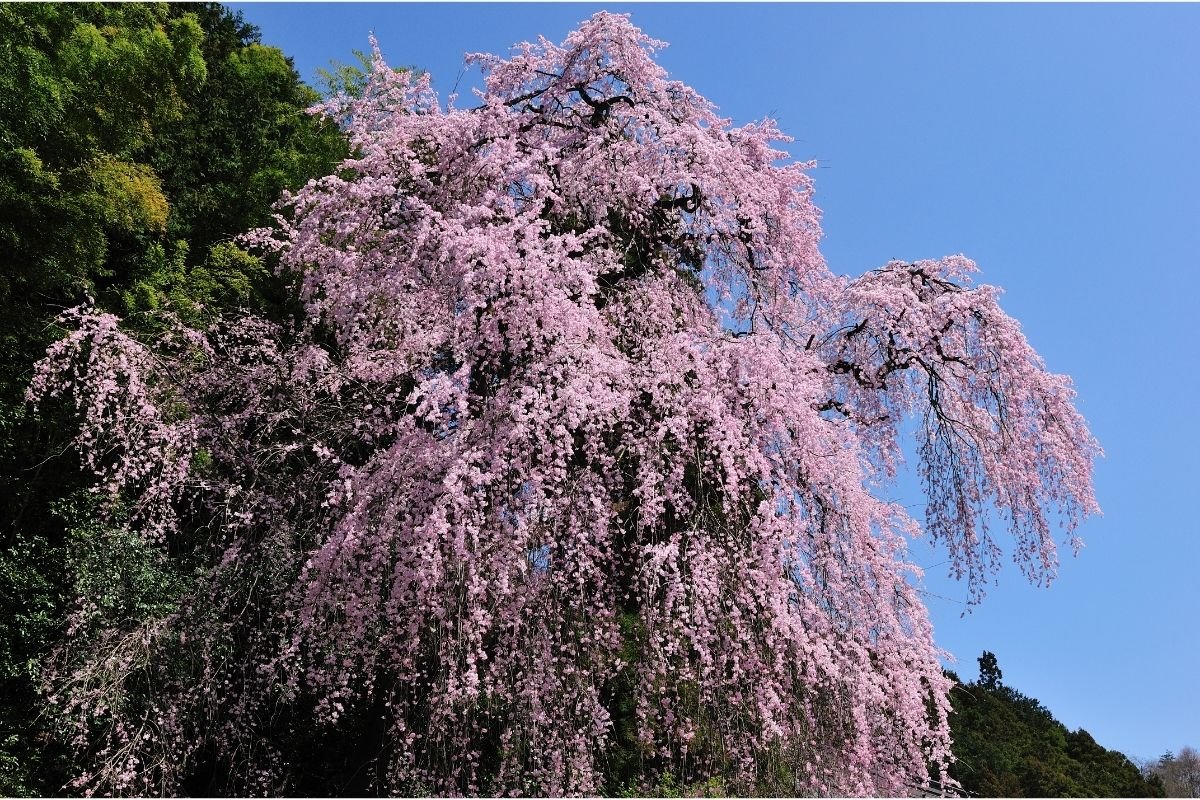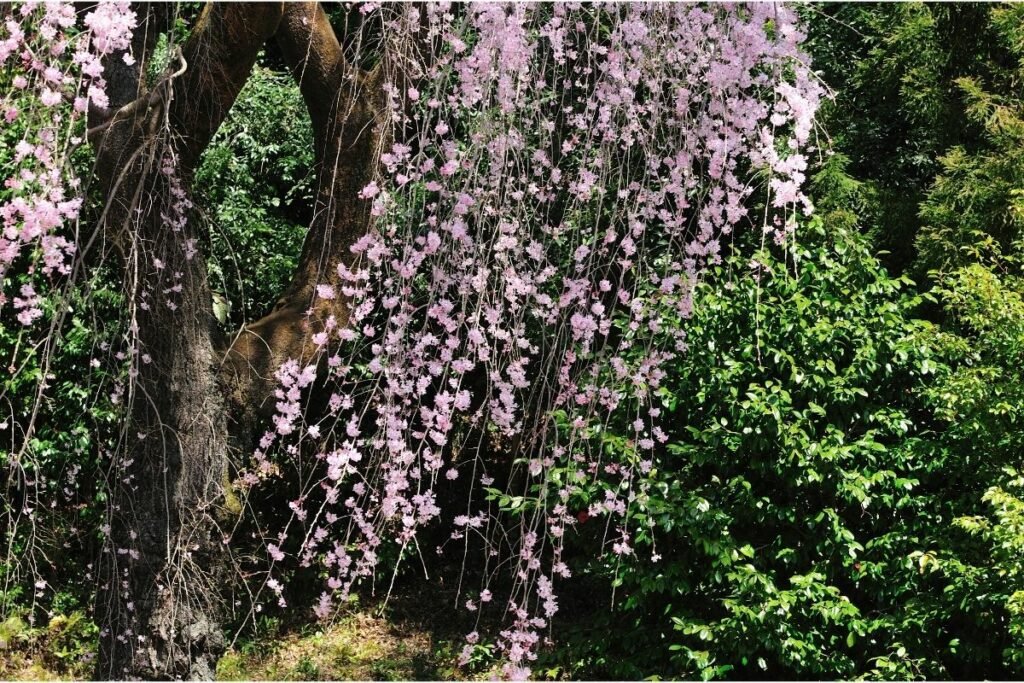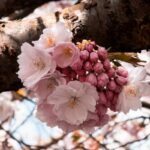Weeping cherry trees are elegant and gorgeous ornamental plants that have the added benefit of being incredibly low maintenance and tough.
They turn a beautiful pink pastel color in the Spring as their flowers bloom. Throughout the rest of the year, the tree remains colorful – green and glossy leaves in Summer, golden and bronze leaves in Autumn, and finally deep hues of copper in the Winter from the bark.

These plants make an excellent addition to any garden. And all they need is some soil, sunlight, and very occasionally some water.
But just how big do these incredible trees get? Keep reading to find out more.
Weeping Cherry Trees: The Basics
The weeping cherry has delicate and arching branches that naturally form a pleasing fountain or chandelier shape. These branches look wonderful all year round as the bark is an attractive gold or bronze color, and they are covered in glossy, deep green leaves.
In Spring, however, the tree comes into its own and the delicate pink blossoms are very eye-catching. Swathes of pink branches create a natural contrast to the trees’ surroundings, creating a truly gorgeous space in nature.
These trees grow to somewhere between 20 and 30ft (around 6 to 9 m), at a rate of roughly 2ft (60 cm) a year. The canopy of the tree will have a width that is very similar to the tree’s height.
Growing Weeping Cherry Trees
Want to grow your own? The good news is that weeping cherries are very easy to maintain and will be quite happy in most people’s gardens.
The weeping cherry suits a garden that has a US Hardiness Zone of 5 to 8, but will survive in Zones 4 to 9. This covers just about everywhere apart from California, Texas, and the south of Florida.
Try to plant the tree in an area that receives full sun down to partial shade in soil that is loose with good drainage. You need some sun for your tree as it will not grow as quickly without and will be more likely to contract root rot.
Be sure to pull up any weeds and debris before planting and avoid areas with walls or fences as the branches will bow and weep.
You need to dig a hole that is as deep as the root ball but twice the width, then place the cherry tree in the center. You need to make sure that the base of the trunk is level with the surrounding soil before filling the hole about halfway with soil.
You need to pack this down so that there are no air pockets. Water well, wait for it to drain, and then top up the rest of the way.
For the first year after planting, water well twice a week. After the first year, the tree should be well established and will only need to be watered in dry or hot weather.
You do not need to prune your tree unless you want to maintain its size but fertilizing is recommended once the leaves begin to bud.
Cherry Trees in Japan
If you are fortunate enough to be in Japan during the Spring, we highly recommend that you visit some of the country’s cherry trees. The sakura – cherry blossom trees – are incredibly well cared for and bloom every year. It is quite the spectacle!
The sakura time varies slightly from year to year, but it is always after the middle of March and before the beginning of May (see more about Sakura here). Can’t make it to Japan then? Don’t worry!
There are lots of different tree varieties that produce similar busts of color. There are so many varieties that you are bound to catch some blossoms anywhere from Okinawa in January, through to April in Yoshino.
Hanami
Hanami is the name given to the simple act of appreciating and observing a cherry blossom tree whilst it is blooming.
Hanami more literally translates into English as ‘flower viewing.’ This practice can feel akin to a festival as it is a very social activity – families, friends, and even coworkers meet under flowering cherry trees to enjoy a picnic.

In the evening, hanami becomes yozakura as lights and lanterns are placed into the winding branches so that you can still see the trees in the dark.
These practices are an important part of Japanese culture and have been for over 1 000 years. Since the Heian period (794-1185), cherry trees have been celebrated through poetry, literature, and other art forms.
The blossoms also feature in symbols for fallen soldiers and can be seen etched in some samurai swords (see also, ‘What is a Katana?’).
The blossoms are used as symbols of friendship and new beginnings but can have other layered meanings. For example, it is not uncommon for these blossoms to represent the fleeting nature of life as they only bloom for a relatively short time.
If you do choose to visit for the sakura, there are a couple of etiquette points that you need to be aware of, especially if you try hanami.
Do not place your picnic blanket down too close to the tree’s roots as you may cause damage and kill the tree. Do not damage the tree in any way including taking off blossoms or snapping branches. This would be seen as sacrilege.
You should also be aware of your presence and the impact it may have on those around you. Hanami is popular so try not to take up too much space or make obnoxious levels of noise. Similarly, be sure that you take all of your rubbish away with you to dispose of properly in a bin.
Finally, be aware that not all grounds will allow the practice of hanami. Some private gardens have banned it altogether as it is not brilliant for the health of the grass.
Be sure to check that you are allowed to sit down for a picnic before you plonk your blanket down to avoid being rude.
Final Thoughts
How big do weeping cherry trees get? A weeping cherry tree grows to around 20 or even 30ft (roughly 6 to 9 m) tall, growing on average 2ft (60 cm) a year.
It is important to remember that the tree will have a spread that is roughly equal to its height, meaning that a 20ft tall tree will have a 20ft wide canopy (6 m tall and 6 m wide canopy).
They are gorgeous trees that are celebrated in Japan for good reason. The sakura season is a great time to practice hanami with those around you.
Taking a moment to appreciate the beauty of cherry blossom trees with those you love is a lovely way to spend an afternoon!
- What Is a Maiko? - July 13, 2025
- What Does Domo Arigato Mean? - July 12, 2025
- What Does Naruto Mean? - July 12, 2025









